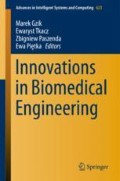Abstract
The paper contains results of statistical and chemometric analysis for 15 thiourea derivatives containing the 3-amino-1,2,4-triazole moiety and characterized by antimicrobial activity against Staphylococcus aureus (NCTC 4163, ATCC 25923, ATCC 6538, ATCC 29213), Staphylococcus epidermidis (ATCC 12228) bacteria, as well as by low cytotoxicity (or lack thereof) against infected MT-4 cells. Multiple regression and cluster analysis were employed to perform the study. The research enabled obtaining linear relationships connected with three molecular descriptors SA, η, logP. The conducted chemometric analyses indicate that the increase in activity against the studied strains is closely related to the type and position of substituent in a phenyl ring.
Access this chapter
Tax calculation will be finalised at checkout
Purchases are for personal use only
Preview
Unable to display preview. Download preview PDF.
References
Leonetti, F., Favia, A., Rao, A., Aliano, R., Paluszcak, A., Hartmann, R.W., Carotti, A. Design, synthesis, and 3D QSAR of novel potent and selective aromatase inhibitors. J. Med. Chem., 30, 6792–803, (2004)
Pierre, F., Stefan. E., Nédellec, A.S., Chevrel, M.C., Regan, C.F., Siddiqui-Jain, A., Macalino, D., Streiner, N., Drygin, D., Haddach,M., O’Brien, S.E., Anderes, K., Ryckman, D.M. 7-(4H-1,2,4-Triazol-3-yl)benzo[c] [2,6]naphthyridines: a novel class of Pimkinase inhibitors with potent cell antiproliferative activity. Bioorg. Med. Chem. Lett., 15, 6687–92, (2011)
Kumar, D., Narayanam, M.K., Chang, K.H., Shah. K. Synthesis of novel indolyl-1,2,4-triazoles as potent and selective anticancer agents. Chem. Biol. Drug. Des., 77, 182–188, (2011)
Sumangala, V., Poojary, B., Chidananda, N., Arulmoli, T., Shenoy,S. Facile synthesis, cytotoxic and antimicrobial activity studies of a new group of 6-aryl-3-[4-(methylsulfonyl)benzyl]-7H-[1,2,4]triazolo[ 3,4-b][1,3,4]thiadiazines. Eur. J. Med. Chem., 54, 59–64, (2012)
Ji, D., Lu, J., Lu, B., Xin, C., Mu, J., Li, J., Peng, C., Bao, X. Efficient synthesis and antimicrobial activity of some novel S-_-Dglucosidesof 5-aryl-1,2,4-triazole-3-thiones derivatives. Bioorg. Med. Chem. Lett.„ 23, 1997–2000, (2013)
Koparir, M., Orek, C., Parlak, A.E., Söylemez, A., Koparir, P., Karatepe, M., Dastan, S.D. Synthesis and biological activities of some novel aminomethyl derivatives of 4-substituted-5-(2-thienyl)- 2,4-dihydro-3H-1,2,4-triazole-3-thiones. Eur. J. Med. Chem., 63, 340–346, (2013)
Prakash, O., Aneja, D.K., Hussain, K., Lohan, P., Ranjan, P., Arora, S., Sharma, C. Aneja, K.R. Synthesis and biological evaluationof dihydroindeno and indeno [1,2-e] [1,2,4]triazolo [3,4-b] [1,3,4]thiadiazines as antimicrobial agents. Eur. J. Med. Chem. 2011, Tom 46, strony 5065-5073.
Stefanska J., Stepien K., Bielenica A., Szulczyk D., Miroslaw B., Koziol A. E., Sanna G., Iuliano F., Madeddu S., Jozwiak M., Struga M. Antimicrobial and Anti-biofilm Activity of Thiourea Derivatives Bearing 3-amino-1H-1,2,4-triazole Scaffold. Medicinal Chemistry., 12, 478–488, (2016)
Stefanska J., Szulczyk D., Koziol B. E., Miroslaw B., Kedzierska E., Fidecka S., Busonera B., Sanna G., Giliberti G., La Colla P., Struga M. Disubstituted thiourea derivatives and their activity on CNS: Synthesis and biological evaluation. European Journal of Medicinal Chemistry., 55, 205–213, (2012).
Hyper Chem. Hyper Chem (TM), Professional, Hypercube, Inc., 1115 NW 4th Street, Gainesville, Florida 32601, U.S.A. (2012)
Stefanska J., Nowicka G., Struga M., Szulczyk D., Koziol A.E., Augustynowicz-Kopec E., Napiorkowska A., Bielenica A., Filipowski W., Filipowska A., Drzewiecka A., Giliberti G., Madeddu S., Boi S., La Colla P., Sanna G., Antimicrobial and anti-biofilm activity of thiourea derivatives incorporating a 2-aminothiazole scaffold, Chemical and Pharmaceutical Bulletin (Tokyo), 63, 225–36 (2015)
Bodor N., Gabanyi Z., Wong C., A new method for the estimation of partition coefficient, J. Am. Chem. Soc.,111, 3783 (1989)
Filipowska A., Filipowski W., Tkacz E., Nowicka G., Struga M.,. Statistical analysis of the impact of molecular descriptors on cytotoxicity of thiourea derivatives incorporating 2-aminothiazole scaffold. Chemical and Pharmaceutical Bulletin., 64, 1196–1202, (2016)
Astela A., Biziukb M., Przyjaznyc A., Naminikb J., Chemometrics in monitoring spatial and temporal variations in drinking water quality, Water Research, 40, 1706–1716, (2006)
StatSoft, Inc. (2014). STATISTICA (data analysis software system), version 12. www.statsoft.com
Dehmer M., Varmuza K., Bonchev D., Emmert-Streib F., Statistical Modeling of Molecular Descriptors in QSAR/QSPR, Wiley-Blackwell, (2012)
Khaledian S., Saaidpour S. Quantitative Structure-property Relationship Modelling of Distribution Coefficients (logD7.4) of Diverse Drug by Sub-structural Molecular Fragments. Method Orient. J. Chem., 31, 1969–1976, (2015)
Filipowska A., Filipowski W., Tkacz E.,. Study of structure-cytotoxicity relationships of thiourea derivatives containing the 2-aminothiazole moiety, Innovations in biomedical engineering, Advances in Intelligent Systems and Computing. Innovations in Biomedical Engineering: Springer, 526, 276–285, (2017)
Carb R., Robert D., Amat L., Girones X., Besalu E. Molecular Quantum Similarity in QSAR and Drug Design, Lecture notes of chemistry 73, Springer-Verlag Berlin Heidelberg (2000)
Fukui K., Yonezawa T., Shingu H. A Molecular Orbital Theory of Reactivity in Aromatic Hydrocarbons. J. Chem. Phys., 20, 722725, (1952)
Author information
Authors and Affiliations
Corresponding author
Editor information
Editors and Affiliations
Rights and permissions
Copyright information
© 2018 Springer International Publishing AG
About this paper
Cite this paper
Filipowska, A., Filipowski, W., Tkacz, E., Wujec, M. (2018). Statistical Analysis of the Impact of Molecular Descriptors on Antimicrobial Activity of Thiourea Derivatives Incorporating 3-amino-1,2,4-triazole Scaffold. In: Gzik, M., Tkacz, E., Paszenda, Z., Piętka, E. (eds) Innovations in Biomedical Engineering . IBE 2017. Advances in Intelligent Systems and Computing, vol 623 . Springer, Cham. https://doi.org/10.1007/978-3-319-70063-2_19
Download citation
DOI: https://doi.org/10.1007/978-3-319-70063-2_19
Published:
Publisher Name: Springer, Cham
Print ISBN: 978-3-319-70062-5
Online ISBN: 978-3-319-70063-2
eBook Packages: EngineeringEngineering (R0)

